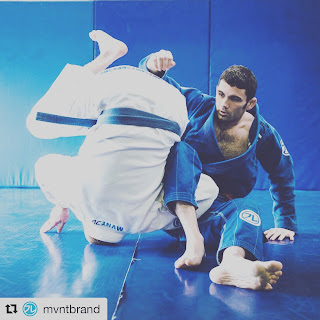In my previous article I discussed how I run my Intermediate BJJ Classes
This time I'm going to cover how we run our beginner BJJ Program.
For Beginners Classes I follow an eight week program covering a different topic each week. I try to give the beginner students a good introduction to the most important positions and situations and then they can go into much more detail on each position when they graduate to the intermediate classes.
My Eight week program consists of:
Week 1 - Mount Position
Week 2 - Back Control
Week 3 - Side Control
Week 4 - Closed Guard Submissions
Week 5 - Closed Guard Sweeps
Week 6 - Open Guard
Week 7 - Guard Passing
Week 8 - Escapes from Positions and Submissions
Warm Up
Warm Ups for beginners classes consist of a light jog, joint rotations and then some basic JiuJitsu related movements such as hip escapes. Intense warm ups which are usually not a good idea in these sessions as beginners will be too exhausted to focus on learning techniques properly.
Standing Techniques
Each Class starts off with drilling one basic standing technique such as an escape from a grips, basic throws and takedowns. I always make these techniques relevant for self defence situations as this is the primary reason that most students are learning martial arts. An example of a technique in this section of the class might be to clinch against opponent throwing punches, get body-lock takedown, secure mount position.
I will break each technique down into five steps and give a 'Cue' word for each step. I find that any more than five steps tends to be too much to remember for new students. If necessary I will give each student additional information or technical feedback about the technique as I'm walking around the class.
Ground Techniques
Next we move on to techniques based around whatever theme we are covering this week. I stick to just the highest percentage techniques from each position to expose the students to what I feel are the most important movements. These are the moves that I feel they need to learn and understand first before moving onto more complicated techniques. For example in Mount week I teach the students how to maintain Mount position and how to counter the most common escapes then we will work on Americana from Mount, Arm-lock from Mount, Cross Collar Choke from Mount and Transitioning from Mount to Back Control.
Where possible I will stay away from Techniques which are too Sports BJJ specific and stick to fundamentals which work with or without the Gi and whether or not the opponent is trying to punch you. There will be plenty of time in the Students training career to practice Sports specific techniques but I feel its important to get the basics right first.
Positional Sparring
In some Beginners Classes I will also include positional sparring. This helps beginners get an idea of what the techniques should feel like against resistance in a safer environment. I don't believe its a good idea to let beginners Spar right from the beginning. Beginner students will not to be able to apply any actual Jiujitsu techniques and will instead just spend five minutes trying to headlock each other. There is also a higher risk of injury and it will probably be off-putting for the majority of new students.
Fight Simulation Drill
At the end of the class we try to link all the techniques learnt that day into a Fight Simulation Drill. This is a good way to revise the techniques and also linking techniques together based on a specific response from the opponent. An example of this could be:
- Close distance and Clinch against Partner Throwing Punches
- Get Body-Lock Takedown to Mount Position
- Maintain Mount for ten seconds as Partner tries to escape with 50% resistance
- Execute Americana or Arm-Lock Submission based on Arm Position of your Partner
- Get up and Switch Roles
I have found that drills such as this are a great way to bridge the gap between learning techniques and then applying the techniques in sparring.












